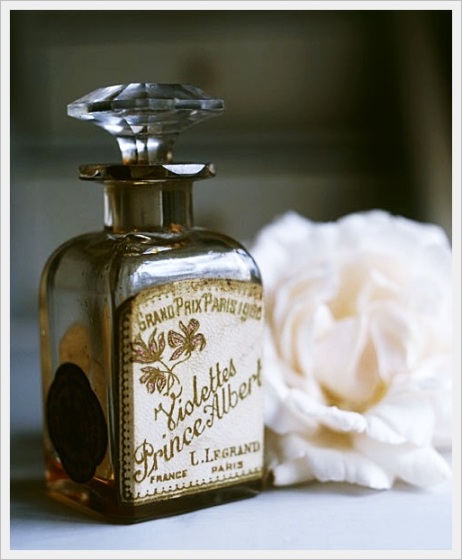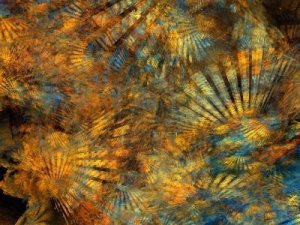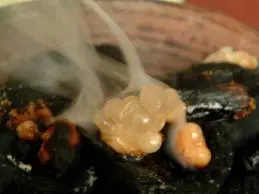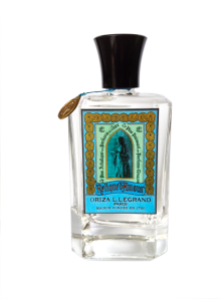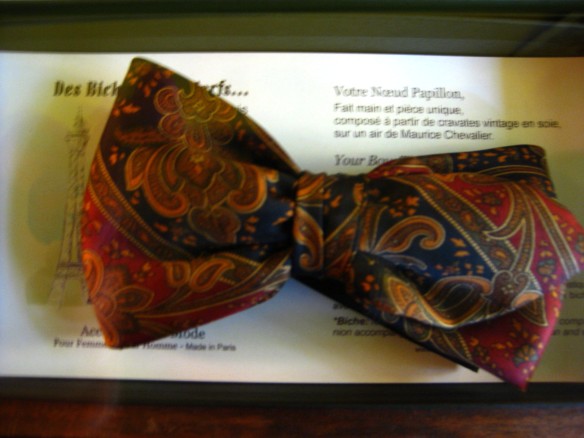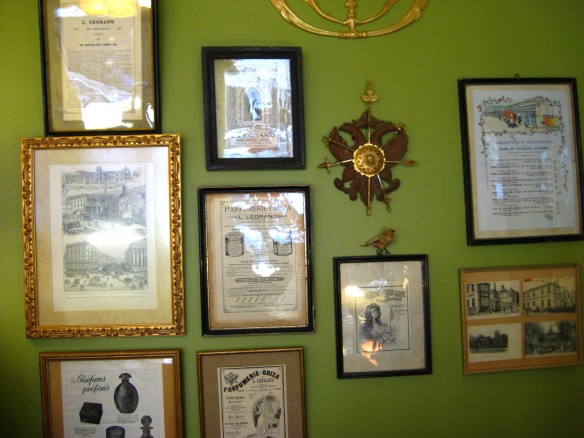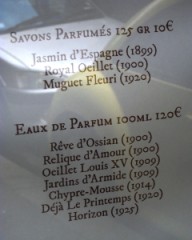For the next few days, I’d like to take you a trip around the world, starting with a visit to Tarzan in a forest of vetiver green before going to the Sahara where bedouins travel on camels in an oud caravan and finishing in Cuba where men drink coffee, smoke cigars and wear spicy cologne. It’s a journey that was actually created in Italy by the master perfumer, AbdesSalaam Attar (“Dominique Dubrana“) of La Via del Profumo. The fragrances will be Oakmoss (nicknamed “Tarzan”), then Oud Caravan No. 3. and Cuba Express. Today, we look at the first of those.
Oakmoss or “Muschio di Quercia” was very first fragrance AbdesSalaam Attar ever made, and it’s still one of his most popular. In my interview with him, AbdesSalaam shared that it was originally an attar, not an eau de parfum with alcohol as it is now, and called it “Tarzan’s perfume,” a telling sign of his inspiration and vision for the scent. (I love the nickname, so that’s primarily what I’ll call the scent from this point forth.) On his website, AbdesSalaam elaborates on Tarzan’s style, its compositional structure, and the one modern ingredient which he used in order to create a bridge between modern and classical perfumery. I’ve taken the liberty to format his sentences into paragraphs for reasons of space, and they read in relevant part as follows:
Oak Moss is the ideal scent for interpersonal exchanges, either informal in your spare time or professional for your work. This perfume, actually, allows you to propose your personality in a sensual way but without being provoking
The delicately woody aroma of the sandalwood, and the almost human note of the Oak Moss, make it at the same time intriguing and reassuring – in one word charming. Although the composition of Oak Moss is a classical one (Vetyver, Sandalwood, Oak Moss), its perfume stands out for its refined sobriety and although it is a perfume for men (Tarzan) it is most loved by the women who like masculine fragrances, who will wear it for a specific goal: to impress the people around them, wearing an aura of woody notes that emanate the quiet strength and stability of the great trees. […] Put on the back of your hands, it will spread all around you in fragrant waves, thus reviving the technique of the ‘perfumed glove’ of the French court. Oak Moss can be easily customized by adding some drops of patchouli, vanilla, incense, tuberose, or of the preferred fragrance.
‘Oak Moss’ contains one of the new scents of the classical perfumery: the vetyver acetate, obtained from the chemical transformation of the natural vetyver. This is my only concession to the modern perfumery and makes ‘Oak Moss’ an ‘olfactory bridge’ between the perfumes of yesterday and the future ones, exclusively natural and holistic.
AbdesSalaam Attar generally doesn’t give a complete list of notes for his scents, only a nutshell synopsis but, based on what I smelled on my skin, I’d add a few things to the ingredients mentioned in the description, like patchouli and labdanum amber.
Tarzan opens on my skin with oakmoss, vetiver, patchouli, and a hint of labdanum’s golden warmth, all swirling together to create a deep, foresty earthiness. It feels like humus, the dark earth festooned with wet leaves, budding green sprouts, gnarled roots, springy moss, and mushroom-like sediment. Minty vetiver lies on top in an emerald layer, while a quiet, balsamic, resinous darkness stirs underneath.
For the first five minutes, it’s very similar to the opening of Oriza‘s Chypre Mousse, though there are differences. Tarzan is less herbal, earthy, barely fungal, and not at all strewn with violets or their leaves. It’s brighter, less otherworldly, and more traditional, with a balance that skews towards minty vetiver on my skin, instead of moss and mushrooms. In fact, the moss feels like an abstract and heavily refined note, a swirling suggestion instead of a solidly concrete, dense blanket. It’s also a fresher sort of greenness than the sort of mineralized, sometimes fusty or musty, grey lichen moss that you’d find in many vintage chypres.
10 minutes into its development, Tarzan begins to shift on my skin. The vetiver grows stronger, emitting constant ripples of mint. That last part is due primarily to my skin chemistry which tends to amplify the note, as well as its minty side. I cannot stress this enough, my skin does odd things with vetiver, particularly the Haitian sort that AbdesSalaam loves to use in his oriental compositions. Whenever a fragrance has a substantial amount of vetiver, my skin amplifies it to the point of overshadowing much else and, to my dismay, almost always turns it into either fresh mint or smoky mint. I’m really not fond of the note as a core element in my fragrances which is the reason why I struggle with all vetiver soliflores, but it is an issue of my skin’s idiosyncratic chemistry and not something that others commonly experience. Please keep that in mind.
As the vetiver blooms, it intertwines with the mossy greenness to form Tarzan’s core essence, but other things are happening under that rich cloud. Occasional flickers of leathery, chocolate-like patchouli peek out, accompanied by fresh grass and what I’d swear was a touch of hay once in a while. A subtle, undefined spiciness weaves in and out, perhaps from the patchouli, while a growing haze of soft warmth appears to lie over the whole thing as if the vetiver were dappled by sunshine.
That last part is key because it distinguishes the vetiver in Tarzan from that in many other fragrances. This is not the crisp, mineralised note in scents like Hermès‘ Terre d’Hermes, the smoky vetiver of Oriza‘s Vetiver Royal Bourbon, or the purely earthy vetiver of Olivier & Co.‘s Vetiverus. Yes, it’s woody vetiver, but it’s also simultaneously the grassy sort and a heavily refined, almost clarified vetiver that is surprisingly warm and sunny, too. At times, it’s even got a hint of sweetness as well. (If only my blasted skin didn’t make it minty above all else.)
As the first hour draws to a close, Tarzan is primarily (minty) woody vetiver with spicy patchouli in a warm green cocoon. It really doesn’t smell like oakmoss, per se, the humus-like vibe has vanished, and so has the resinous darkness in the base. The thing I really enjoy, though, is a mysterious leathery earthiness that smudges the vetiver’s edges. It first appeared as a tiny flicker about 20 minutes into Tarzan’s development, but becomes really noticeable at the 90-minute mark. It’s not like black truffles, porcini mushrooms, labdanum, patchouli, leatheriness, or sandalwood, but something ineffable that has small traces of all of them combined. Actually, it reminds me of an almost purified oud because there is a whisper of almost curried sweetness that snakes around under the wooded, earthy spiciness. It works so beautifully with the vetiver that I really wish there were more of it, but it is merely a hushed breath on my skin.
From afar, and for hours to come, Tarzan smells primarily of spicy, minty, woody vetiver with flickers of muted earthiness, abstract mossiness, and sunny warmth. It’s a much deeper scent than that description might lead you to believe because it feels as though layers of all sorts of greenness were placed one atop the other, conjoined by earthy and spicy fillings, to create one inseparable whole. It’s not my personal thing due to the vetiver and mint reasons I described above, but I think Tarzan would be very sexy on the right skin. It’s that mesmerizing whisper of sweet, spicy, almost “oud”-like wood and earthiness that would draw me back again and again to sniff this on someone’s neck.
Tarzan’s main contours never change substantially and it’s a very linear scent on my skin except for its smaller nuances. The earthiness retreats to the sidelines after 2.5 hours; the warmth and sweetness grow quite pronounced near the end of the 8th hour; and, in its final stage, a soft creaminess arrives to coat the vetiver. It must be from the sandalwood but, whatever the cause, the velvety creaminess of the vetiver is really pretty.
Tarzan fades away in much the same way, ending 12.5 hours from its start. It’s an astonishing amount of time for an all-natural fragrance, particularly on my wonky skin which rarely holds onto natural scents for long. Perhaps it’s due to the use of “vetyver acetate, obtained from the chemical transformation of the natural vetyver,” but whatever the reason, Tarzan has excellent longevity. The projection and sillage surprised me, too, particularly as most AbdesSalaam scents are inordinately discreet on my skin. Using 4 smears equal to 2 good sprays from an actual bottle, Tarzan opened with 3 inches of projection. It dropped to 2 inches after 20 minutes, then 1 inch after 2.5 hours, but what surprised me was that it remained there for the next 5 hours. Tarzan only turned into a true skin scent on me at the start of the 8th hour. Again, my skin amplifies vetiver, but that’s still an unusual amount of time, particularly for a natural fragrance.
Tarzan or Oakmoss has generally received very positive reviews. Luca Turin briefly talked about the scent back in 2005 in a piece quoted on the La Via del Profumo website. After trying a sampler of scents, Mr. Turin wrote that Oakmoss was one of his favorites:
My favourites are Arabia (Damascus rose-castoreum), Muschio di Quercia, a dry, uncompromising oakmoss, and Legno di Nave, a very nice woody fragrance. All are very skilful, none heavy, trite or overegged. Indeed, many feel surprisingly modern, showing that there may be more life left than I thought in the pre-chemistry tradition. [Emphasis to perfume name added by me.]
On Basenotes, almost everyone likes Oakmoss, too. There are 11 reviews, 9 of which are positive, while 2 are neutral, stemming largely from of the woodiness of the scent. “Darvant” has a detailed analysis about Tarzan’s layers (which include an “incensey” quality on his skin), says that it is one of his favorite vetivers, and concludes with a “buy it” recommendation:
Muschio di Quercia is another great favorite of mine among the AbdesSalaam Attar Profumo’s natural oily creations. A virile traditional fresh-aromatic mossy chypre. Muschio di Quercia is an exceptional vetiver/sandalwood accord (over an obscure dark-mossy base–real animal moss beyond the IFRA inhibitions) and probably one of my two-three favorite vetivers of the worldwide olfactory panorama. All is natural, incensey, realistic, marvellously boise (but extremely wearable and finally subtle). The note of vetiver is (especially along the first stage) really earthy, wild and mossy/incensey in a dark boise way conjuring me immediately the first Etro Vetiver’s formulation (also Etro Sandalo comes in mind at once). I feel in the air the aroma of deep dark forest, it seems to catch dry leaves, oakmoss, musk, tree trunks, barks, dry woodsy berries, woods, earth, hints of resins and misty dust overall combined in to a marvellously realistic olfactory concert of forests fruits. The perfume itself is well crafted for sure, extremely measured and balanced yet elegant and comforting. The aroma is never too much heavy or oppressing, the vetiver is woody for sure although I would not define Muschio di Quercia as a properly “fresh”-woody vetiver. Not so much to add to describe this marvellous composition. Buy it guys.
Others feel the same way, talking about how it’s a full “bottle worthy” fragrance that evokes the great outdoors warmed by sunshine, or is simply a very “satisfying” woody vetiver with high quality ingredients. “Alfarom” and “Flathorn” write respectively and in relevant part:
- it is mainly a vetiver centered composition. After the initialy mossy-dark green opening, the fragrance evolves into a simple, old fashioned yet extremely satisfying fresh-woody vetiver base that would make the happiness of any vetiver freak out there. [¶] Well crafted with high quality natural ingredients. Totally endorsed.
- This one is much warmer, woodier and grassier [… than real oakmoss]. And wonderful. As Quarry said it is a walk outside in sun-warmed earth, fields and woods. I love naturalistic fragrances, and this one, with it’s warm earth vibe, feels very easy-going and relaxing in the same way an actual walk might.
Other reviews mentioned green, but it has little green ambiance to me. It’s more an early spring or autumn walk, more about the other notes of the outdoors. A warm grassy vetiver is the biggest player in this to me, but what brings this alive is the feeling of sunshine warming all the notes, making them mid-tone, even that darkest and densest of wood inhabitants, oak moss. It is a companionable fragrance made more attractive by the fact of it’s mostly natural ingredients. It’s a linear fragrance, but as is usually said, when you love the note it is, you welcome the fact it doesn’t change. Bottle worthy!
On Fragrantica, there is only one review for Oakmoss thus far (under its Italian name of Muschio di Quercia), and it’s a very positive one. “Colin Maillard” writes:
A deceptive name for a beautiful silent symphony built around vetiver. The opening is already centered on this great wood note, a superb, realistic, dense and honest rendition of all nuances of vetiver, from humid hay to its green, zesty, hearty sides. I’d say it’s the quintessence of wood, without boundaries, restrictions, artificial shapes and without synthetic tricks, just pure vetiver woody greatness – as usual with Dubrana, one of the most honest and sincere perfumers in nowadays’ perfumery when it comes to enhancing the voice of nature. I also detect a sharp cedar/oak note, and perhaps sandalwood too, which gives a sweet-syrupy woody note on the very base that perfectly blends with the sweet/wet side of vetiver. Despite being so natural and “free” to express all facets of wood, it’s a really elegant and noble cologne, with a superbly aromatic but discrete presence on skin. In its early stages, the drydown is still boldly woody, aromatic and rich, evocative and utterly refined in its compelling simplicity and naturality. The oak moss note is there, although quite light, to support and enhance the earthy-mossy and “rural” side of vetiver more than acting as a “separate” note itself. The very final drydown is a pleasant, silky, aromatic, super cozy and elegant earthy-woody accord with a hint of talcum and a subtle ambery warmth. Worth a try, a purchase and a gift!
8,5/10
I very much agree with all the commentators. Oakmoss is definitely worth a try if you are a hardcore vetiver lover. It’s easy to wear, versatile, unisex, long lasting, and has a very polished feel. It may not evoke an animalic, jungle “Tarzan” for me, or be a true oakmoss soliflore — something which isn’t really possible anyway in this day and age of IFRA/EU restrictions — but it’s an elegant, rather sexy woody vetiver with smoothness, subtle depths, and a rare sunshine-warmed character. Very nice.
Disclosure: My sample was provided courtesy of AbdesSalaam Attar. That did not impact this review. I do not do paid reviews, and my views are my own.












